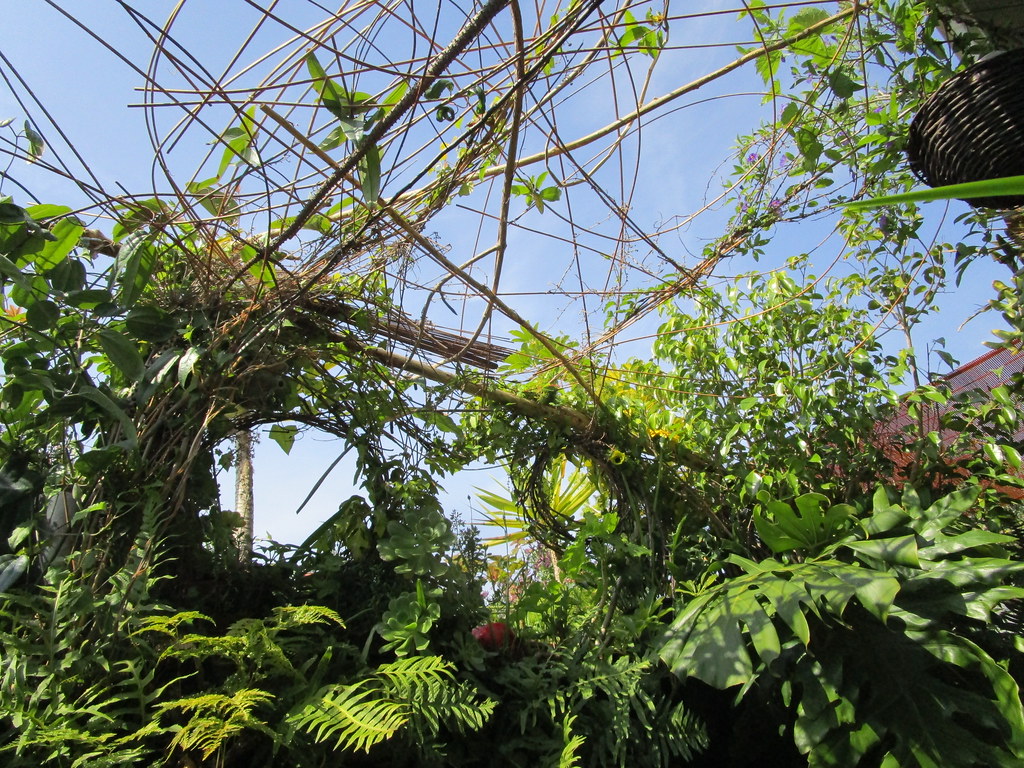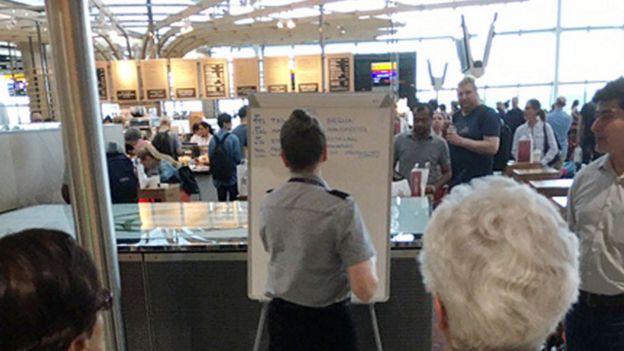Image by Monica Pinheiro, license CC BY-NC-SA (CC).

"More than conversation at the interface, it is creative assemblages like these that explore and elaborate the particular dynamic capacities that digital media afford and the ways that through them humans and machines can perform interesting new effects (...) in uniquely particular ways." Lucy Suchman (2009). Human-machine reconfigurations: plans and situated actions.
May 13, 2020
mobility
Mar 31, 2019
March
Oct 12, 2018
Geographies of Mobilities
"The rhythms of commuting are exceedingly diverse and shaped by numerous factors, including the mode of transport and its particular affordances, cultural practices and social conventions, modes of regulation, the distance travelled and the specificities of the space passed through. (...) The spatial scales of travel vary according to weather a journey conjoins home and work over short distances or extends many miles, or occurs on large highways, smaller roads or railways."Tim Edensor. Commuter: Mobility, Rhythm and Commuting. in Tim Cresswell and Peter Merriman (2016). Geographies of Mobilities: practices, spaces, subjects. Routledge. Image by Monica Pinheiro, license CC BY-NC-SA (CC)
Jan 11, 2018
Stillness in a mobile world
May 28, 2017
Feb 2, 2017
(im)mobility systems
"(...) interdependent systems of 'immobile' material worlds, and especially exceptionally immobile platforms (transmitters, roads, garages, stations, aerials, airports, docks) structure mobility experiences. The complex character of such systems stems from their multiple fixities or moorings, often on a substantial physical scale. Thus 'mobile machines', such as mobile phones, cars, boats, aircraft, trains and computer connections, all presume overlapping and varied time-space immobilities. There is no linear increase in fluidity without extensive systems of immobility."Anthony Elliott & John Urry (2010). Mobile Lives. Routledge, p. 20.
 |
October 16, 2009 Image by Monica Pinheiro, license CC BY-NC-SA (CC) |
Nov 20, 2009
social artefacts
"Although cell phones are usually considered mere instruments at their owners’ service, they are also social artifacts. As a communication channel, they support the relationship with others. But, more than this, cell phones communication patterns is influenced by the social context in which it is used, and, as it can be activated from anywhere, at any time, cell phones took up also an active social role. But who communicates with whom? What is the structure of social networks created by communication through cell phones? Is cell phones use connected to a borderline blur between social contexts and individual practices, as our daily roles intertwine?"
(...)
"The present study allowed evaluating the level of Portugal involvement in the Mobile Communication Society, highlighting the main differences between socio demographic groups within the area of several use contexts. On the other hand, it contributed to identify user profiles, enabling to foresee the development path on this sector, where everyday new possibilities emerge. Its major contribution will be perhaps the opening of a discussion about the need to analyze mobility role in general, and cell phones in particular, in today’s society."in LINI - Lisbon Internet and Networks Institute
Jun 3, 2009
storing artefacts

Begtrup, G. E., Gannett, W., Yuzvinsky, T. D., Crespi, V. H., and Zettl, A. (2009). Nanoscale reversible mass transport for archival memory. Nano Letters, 9(5):1835-1838.
Mar 6, 2009
mobility concept
"The train and airline infrastructures are highly integrated with ICTs such as electronic reservation systems and traffic control systems. It is therefore important to recognize that the fundamental nature of technological revolution in the late twentieth century is the dynamic and complex interplay between old and new technologies and between the reconfiguration of the technological fabric and its domestication (...).This paper concerns the concept of mobility, which manifests such a transformation of our social lives combining new and old technologies. It is now widely argued that our life styles have become increasingly mobile in the sense that the speed of transportation and hence geographical reach within a given time span is dramatically augmented by modern technological developments and sophistication such as train and airplane systems."
Jan 20, 2009
ICT changing the meaning of being «at work»
"Nomadic use of ICT will challenge the meaning of ‘at work’ Nomadicity will make work patterns less fixed in time and space. This will create major challenges for both employers and employees. Making working life and education more sustainable in terms of working and studying from home intensifies the need for realising the nomadicity that ICT can provide."
Dec 14, 2008
(antecipating) Place in mobile work
"Mobile workers often need to configure their activies to take account of the different places they find themselves. This can involve considerable ‘juggling’ of their plans, humble office equipment, and their co-workers. In turn mobile workers change places, as they appropriate different sites for their work. Specifically, technology allows for the limited re-appropriation of travel and leisure sites as places for work (such as trains and cafés). Time is also an important practical concern for mobile workers. While mobile work may be seen as relatively flexible, fixed temporal structures allow mobile workers to ‘accomplishment synchronicity ’ with others."
Apr 15, 2008
Homo mobilis
- Nomads at last
- Working from anywhere
- The new oases
- Family ties
- Location, location, location
- A world of witnesses
- Homo mobilis
Jan 10, 2008
implosion of the world on the individual
"Human extensibility and the implosion of the world on the individual (time-space compression) represent simultaneously opportunity and threat - the opportunity to communicate and engage in dialogue and commerce, and the threat of besiegement and incapacity to absorb or cope with relentless volumes of information calling for attention. Clearly, the temporal aspects of this problem require abilities to engage and disengage in one's connectivity to the world - to network selectively or to broadcast universally, as required."
Jul 26, 2007
mobile professional work
"The results of the fieldwork in Tokyo clearly demonstrate that the conventional understanding of mobility, rigidly confined to geographic aspects, does not suffice for grasping the diverse realities of dynamic work practices of contemporary professional workers, in particular mobile professionals. Their work practices exhibit not only an extensive geographical movement in daily work activities but also intense interaction with a wide range of people through both physical and virtual interaction means. They also show flexible operation as an independent unit of business that can be flexibly mobilized by the firms."
mobility as duality: fluidity & stability
"(...) we proposed setting an integrative approach that sees mobility as a duality and thus facilitate the practice of theorisation on mobility; namely, studying both fluidity and stability in contemporary society and work organizations and understanding their mutual influences. The next step will be to test our arguments in various real-world contexts. We believe that field studies with rich and contextualized data on the actualities of mobile devices’ usage and on the kind of mobility we engage in are essential to fertilize this embryonic research field." Pica, Daniele & Kakihara, Masao (2003). The duality of mobility: understanding fluid organizations and stable interaction. ECIS 2003. Image by Monica Pinheiro, license CC BY-NC-SA (CC)
emerging work practices of mobile professionals
"This thesis aims to offer a theoretical foundation for the concept of mobility, particularly in contemporary work contexts. With support of information and communication technologies (ICTs) in general and mobile technology in particular, contemporary work activities are increasingly distributed and dynamically conducted in various locations. In such an emerging work environment, maintaining a highly level of ‘mobility’ is becoming critical for contemporary workers, particularly for mobile professionals. Based on the theoretical considerations on the concept of mobility, this thesis empirically explores the dynamic and heterogeneous nature of mobile professionals’ work practices.
(...)
The mode of mobility is characterised not only by extensive geographical movement but also by operational flexibility and intense interaction in mobile professionals’ dynamic work activities. Based on these theoretical and empirical discussions, this thesis aims: 1) to theoretically underpin our understanding of mobility in contemporary work contexts; 2) to offer empirically grounded implications for the post-bureaucratic, fluid organising of work; and finally 3) to advance the ongoing debate on the dynamic interplay of work, organisation, and technology."
Jul 16, 2007
Europe cross-border transitions
In order to solve bureaucratic workers loss of time, the study managed to elicit the needed requirements for civil data information about individuals to «move» between countries. More details on the project in
IDABC - Case Study in the Euregio: Reducing the administrative burden:
"The study examined the administrative processes and requirements which had to be completed by the mobile citizens in these border areas. In doing this, it adopted the customers’ perspective, who wanted to reduce paper work and contacts with administrations. This study prepared the ground for the implementation of the trans-border eGovernment services that were able to improve the life of citizens wishing to move or take up activities in another Member State."(1) "The Mobility Case Study focused on municipalities of the Euregio Maas-Rhine, located at the point where the three countries Belgium, Germany and the Netherlands meet, on an area of nearly 11 000 km² and with a population of 3.7 million"
May 31, 2007
mobile work practices
"This is clearly the world of the contemporary mobile work mode. Mobile workers engage themselves in getting their job done not only at their formal offices but at various sites such as home, clients’ offices, hotels, moving vehicles and so on. Looking at their nature of work, there is no rigid boundary that determines whether inside or outside the office: anywhere can be their office. They permeate across “regions” and “networks.” In this sense, we can argue that mobile work is the fluid mode of working."
May 18, 2007
Thoughts on Mobility
Para que os nossos telefones nos possam acompanhar e nós os possamos adjectivar de «móveis», outras infraestruturas (bem) fixas, têm que existir para nos permitir «dar mobilidade» aos nossos objectos móveis: antenas, amplificadores de sinal,....
É tão óbvio, que se torna ausente do utilizador comum. O enfoque na mobilidade humana , torna-se o ponto central do olhar. Nós somos a mobilidade.
This thoughts came stumbling after reading in a different kind of journal. One that makes use of multimedia in such a different way to present a line of thought, that my mind was receiving so many stimulus that it was hard to process all the signals i was being bombarded with:
- Vectors Journal of Culture and Technology in a Dynamic Vernacular. See also pdf with static information about WiFi.Bedouin, by Julian Bleecker. To luch the project, look for the «Launch Project» on the right side of this page.
Apr 12, 2007
Control & Space
"No other institution eases global contacts and mobility of persons, goods, information and services as much as the state by guaranteeing standards for systems of representation. It is thus above all that the state creates spaces for certain purposes – only one of which is to let social life take place in a physical space in order to control it." (p.35)





